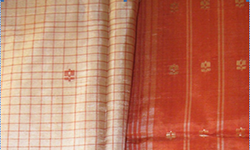
Crafts, Handlooms, Art, Technology
Zari, Zardozi, Tinsel Embroidery
The AIACA
Issue #003,Summer, 2019
Different styles of Indian embroidery have been handed down from generation to generation: zardozi, chikankari, sujuni, kantha, kasuti, toda, mirror work. The passion for embroidery in India has led to great experimentation in the field, with several styles, creating dazzling effects such as the 'stained glass' look, the long cross stitch, rice stitch, textured panels and much more. One can see embroidery on wall hangings, saris, textiles and garments, incorporating unique motifs and patterns.
Zardozi is one of the oldest and most beautiful embroidery styles of India. It is used extensively in clothing and home decoration. Painstakingly and delicately done by hand, creations in zardozi work are timeless, unbounded by the shackles of trends.
History
Zardozi - the magnificent metallic embellishment of India - dates back to ancient times. It finds mention in Vedic literature, the Ramayana and the Mahabharata, and all accounts of the Sultanate period. The country, from very early times, was known for the use of gold embroidery on a variety of objects including furnishings, trappings, parasols, and equestrian ornaments. The more aesthetic and evolved embroideries were used on court costumes and especially on accessories such as shoes.The historical accounts of this craft are shrouded in romantic stories and no accurate data is available. An imperial craft brought to India by Delhi's first Turko-Afghan sultans in the 12th century, zardozi became equally popular with the wealthy Hindu, Mus...
This is a preview. To access all the essays on the Global InCH Journal a modest subscription cost is being levied to cover costs of hosting, editing, peer reviewing etc. To subscribe, Click Here.



